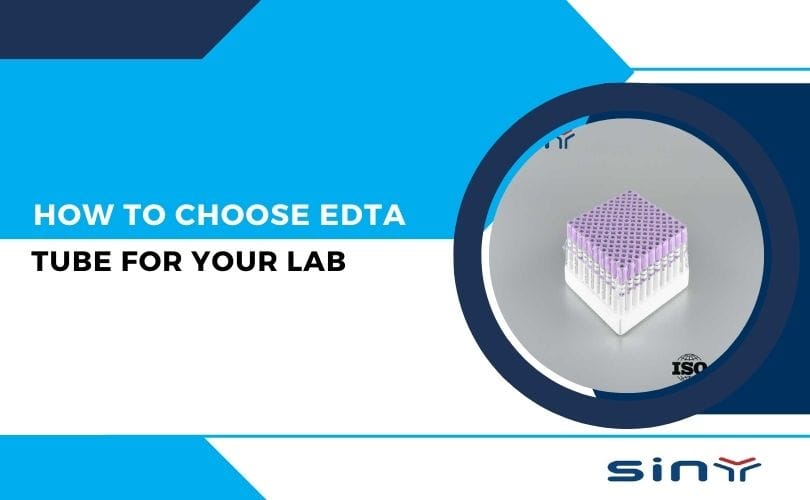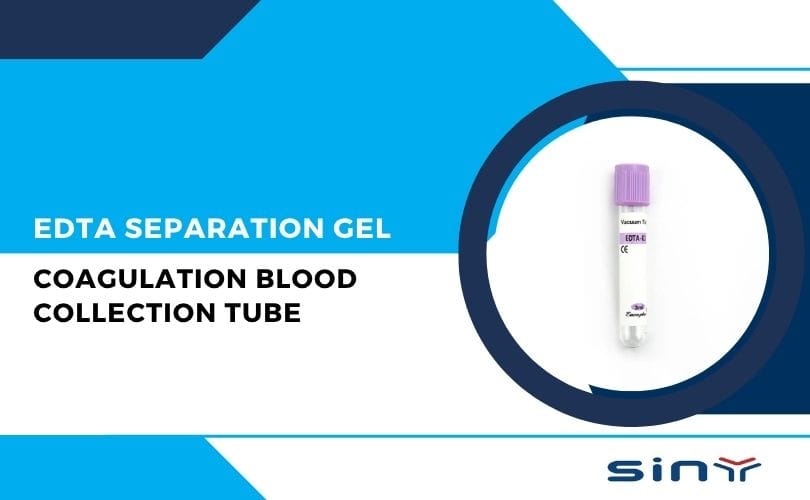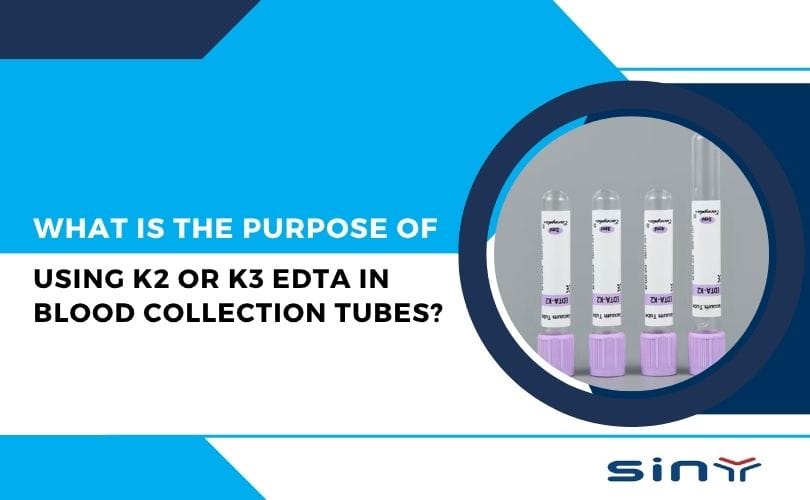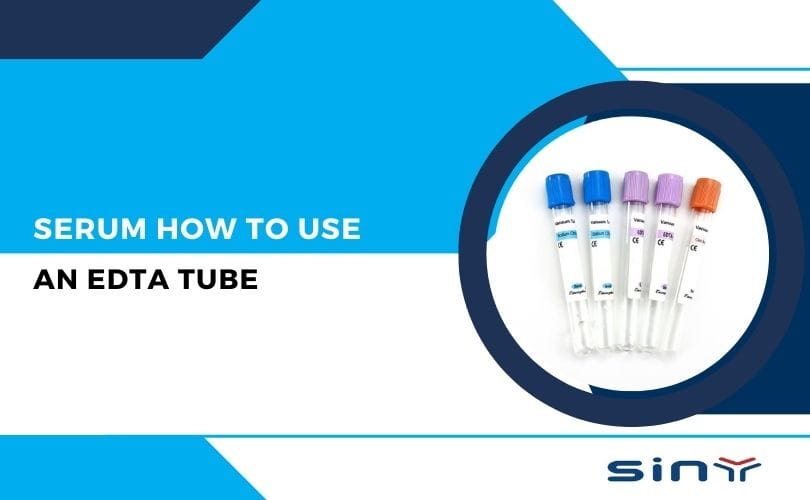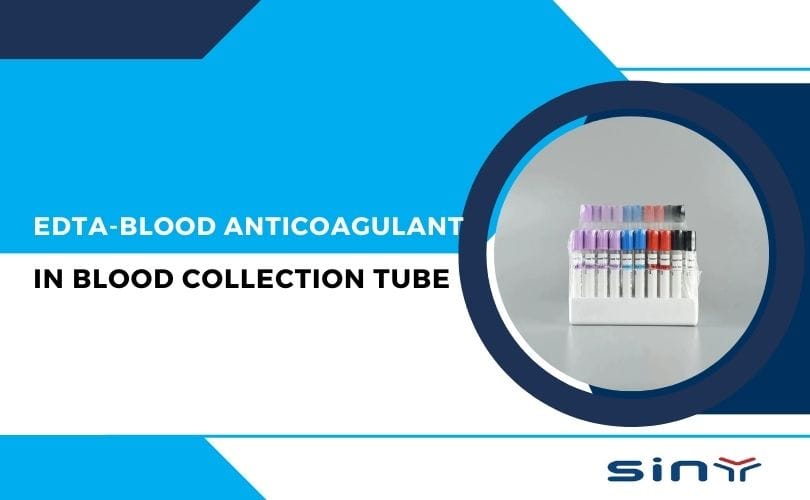What Are Purple Top Blood Collection Tubes?
Purple Top tubes, also known as EDTA tubes, are blood collection tubes that contain Ethylenediaminetetraacetic Acid (EDTA). This anticoagulant prevents blood from clotting by binding calcium ions, ensuring the blood remains in its liquid state for accurate testing.
These tubes are easily identifiable by their purple or lavender-colored caps and are primarily used for hematology tests, including Complete Blood Count (CBC). For more details, check
What Are Purple Top Blood Collection Tubes?
Purple Top tubes, also known as EDTA tubes, are blood collection tubes that contain Ethylenediaminetetraacetic Acid (EDTA). This anticoagulant prevents blood from clotting by binding calcium ions, ensuring the blood remains in its liquid state for accurate testing.
These tubes are easily identifiable by their purple or lavender-colored caps and are primarily used for hematology tests, including Complete Blood Count (CBC). For more details, check out our Purple Top Blood Collection Tubes.
our Purple Top Blood Collection Tubes.
Types of Blood Collection Tubes
Blood collection tubes come in various colors, each indicating the type of additive and its specific use. Here’s a quick overview:
| Tube Color | Additive | Primary Use |
|---|---|---|
| Purple | EDTA | Hematology (CBC, blood cell analysis) |
| Red | None (plain tube) | Serum testing (chemistry, immunology) |
| Green | Heparin | Plasma testing (chemistry, blood gases) |
| Blue | Sodium Citrate | Coagulation studies (PT, APTT) |
| Gray | Sodium Fluoride/Potassium Oxalate | Glucose and lactate testing |
Purple Top vs. Red Top Tubes
Red Top tubes are plain tubes without any additives, allowing blood to clot naturally. The resulting serum is used for various tests, including chemistry and immunology.
Key Differences:
- Additive: Purple Top tubes contain EDTA, while Red Top tubes have no additives.
- Use: Purple Top tubes are for hematology, while Red Top tubes are for serum testing.
- Sample Type: Purple Top tubes yield plasma, while Red Top tubes yield serum.
For more information on EDTA tubes, visit our EDTA Tubes for Blood Collection.
Purple Top vs. Green Top Tubes
Green Top tubes contain Heparin, an anticoagulant that prevents clotting by inhibiting thrombin. These tubes are used for plasma testing, including chemistry and blood gas analysis.
Key Differences:
- Additive: Purple Top tubes use EDTA, while Green Top tubes use Heparin.
- Use: Purple Top tubes are for hematology, while Green Top tubes are for plasma testing.
- Sample Stability: Heparinized plasma is less stable than EDTA plasma for certain tests.
Purple Top vs. Blue Top Tubes
Blue Top tubes contain Sodium Citrate, which binds calcium to prevent clotting. These tubes are primarily used for coagulation studies, such as Prothrombin Time (PT) and Activated Partial Thromboplastin Time (APTT).
Key Differences:
- Additive: Purple Top tubes use EDTA, while Blue Top tubes use Sodium Citrate.
- Use: Purple Top tubes are for hematology, while Blue Top tubes are for coagulation studies.
- Sample Volume: Blue Top tubes require a precise blood-to-additive ratio for accurate results.
Purple Top vs. Gray Top Tubes
Gray Top tubes contain Sodium Fluoride and Potassium Oxalate, which prevent glycolysis and preserve glucose levels. These tubes are used for glucose and lactate testing.
Key Differences:
- Additive: Purple Top tubes use EDTA, while Gray Top tubes use Sodium Fluoride/Potassium Oxalate.
- Use: Purple Top tubes are for hematology, while Gray Top tubes are for glucose testing.
- Sample Stability: Gray Top tubes are specifically designed to stabilize glucose levels.
Comparison Table: Purple Top vs. Other Blood Collection Tubes
| Tube Color | Additive | Main Function | Common Tests | Key Difference from Purple Top |
|---|---|---|---|---|
| Purple Top | EDTA | Prevents clotting, preserves cell structure | CBC, HbA1c, ESR, DNA | Best for hematology |
| Red Top | None / Clot Activator | Serum separation | Chemistry, serology | Promotes clotting |
| Blue Top | Sodium Citrate | Coagulation factor testing | PT, INR, aPTT | Preserves clotting factors |
| Green Top | Heparin | Inhibits thrombin, prevents clotting | Plasma chemistry | Suitable for chemistry, not CBC |
| Gray Top | Sodium Fluoride + Oxalate | Stops glycolysis | Glucose, lactate | Used in diabetes testing |
| Yellow Top | ACD | Preserves RBCs & DNA | Blood culture, genetics | For DNA/HLA studies |
Why Are Purple Top Tubes Essential for CBC?
Complete Blood Count (CBC) is a fundamental diagnostic test that provides critical information about blood cells. Purple Top tubes are the preferred choice for CBC because:
- Anticoagulant: EDTA prevents clotting, ensuring accurate cell counts.
- Cell Preservation: EDTA maintains the integrity of blood cells for analysis.
- Universal Use: Purple Top tubes are standardized for hematology testing.
For a deeper dive into this topic, visit our article on EDTA Tubes Used for CBC.
Choosing the Right Tube for Your Needs
Selecting the correct blood collection tube is crucial for accurate diagnostic results. Here’s a quick guide:
- Hematology: Use Purple Top tubes.
- Serum Testing: Use Red Top tubes.
- Plasma Testing: Use Green Top tubes.
- Coagulation Studies: Use Blue Top tubes.
- Glucose Testing: Use Gray Top tubes.
Explore our Product Category to find the right tubes for your laboratory needs.
Wrapping It Up
When it comes to purple top vs. other blood collection tubes, the difference lies in the additives, purpose, and type of test being performed. The purple top EDTA tube shines in hematology, while red, blue, green, gray, and yellow tops serve specialized roles in diagnostics.
If you’re in healthcare or diagnostics, choosing the right supplier is just as important as knowing the tubes. Explore premium-quality tubes at EDTA Tube to ensure reliable results every time.
FAQs
1. Why is the purple top tube used for CBC?
Because EDTA preserves the shape of blood cells, it’s the best choice for cell counts.
2. Can I use a blue top instead of a purple top for hematology?
No. Blue tops preserve clotting factors for coagulation studies, not cell counts.
3. How long can blood stay in a purple top tube before testing?
Generally up to 24 hours at room temperature, but refrigeration may extend stability.
4. What’s the difference between K2 and K3 EDTA tubes?
Both prevent clotting, but K2 EDTA is preferred as it causes less cell shrinkage.
5. Which tube is best for glucose testing?
The gray top tube because sodium fluoride prevents sugar breakdown.


